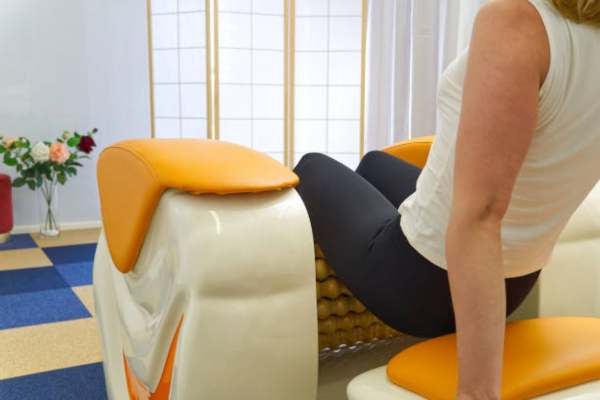Are you curious about how to sit on a kneeling chair properly and unlock its ergonomic benefits whether you’re looking to improve your posture, ease back pain, or simply shake up your seating routine, mastering this unique chair style can transform the way you work or relax. In this guide, we’ll explore why kneeling chairs are a game-changer for comfort and productivity, how to position yourself correctly, and tips to ensure you’re maximizing their benefits. If you’re ready to revolutionize your seating habits and give your body the support it deserves, let’s dive in.
Understanding The Kneeling Chair

The kneeling chair is a unique seating apparatus designed to beautify posture and alleviate discomfort related to traditional chairs. Unlike traditional seating, it capabilities a tilted seat and padded helps for the knees, encouraging an open hip angle that aligns the spine certainly. This ergonomic innovation redistributes weight among the buttocks and shins, decreasing stress at the decrease returned. By selling a forward tilt, it activates center muscle tissues and cultivates an upright posture. For every person searching for an opportunity to slouch-inducing office Kedars, the kneeling Kedar offers a blend of functionality and comfort.
Choosing The Right Kneeling Chair For Your Needs

Selecting the ideal kneeling chair requires careful consideration of your physical needs and workspace setup. Some models come with adjustable seat angles, backrests, or even casters for mobility. Materials range from cushioned fabric to memory foam, catering to different levels of comfort and durability. Assess the dimensions of the Kedar in relation to your height, weight, and desk configuration. Opt for a model that offers ergonomic adjustability to accommodate your body type and preferences. Investing in a high-quality Kedar tailored to your needs ensures a seamless transition into this novel way of sitting.
The Benefits Of Using A Kneeling Chair

The blessings of a kneeling chair enlarge beyond posture correction. Regular use can alleviate continual again ache, improve center electricity, and foster better blood flow with the aid of lowering compression at the thighs. Its design helps diaphragmatic breathing, enhancing awareness and productivity for the duration of long hours of work. For the ones vulnerable to fatigue or stiffness from prolonged sitting, this Kedar offers a dynamic seating revel in that maintains the frame engaged and alert.
How to Sit on a Kneeling Chair: Step-by-Step Instructions for Beginners
Mastering the art of sitting on a kneeling chair may seem daunting at first, but with a few deliberate steps, you’ll soon adapt to its benefits.
1. Adjust the Chair to Your Height and Comfort

Begin by fine-tuning the seat’s angle and height. Your thighs should slope downward at an angle of 20-30 degrees, encouraging a natural alignment of your spine. If your Kedar has adjustable features, experiment with settings to find the most comfortable position.
2. Position Your Knees Correctly on the Cushions

Place your knees gently on the padded supports, ensuring they bear some of your weight but not all of it. Avoid exerting excessive pressure on the kneecaps; the goal is to distribute weight evenly between your knees and buttocks.
3. Ensure Your Hips and Knees Are Aligned
Proper alignment is crucial for comfort and posture. Your hips should sit slightly higher than your knees, creating an open hip angle. This positioning minimizes stress on the lower back and encourages a forward pelvic tilt.
4. Keep Your Back Straight and Shoulders Relaxed
Maintain an upright posture with your back straight but not rigid. Let your shoulders drop naturally, avoiding tension. This relaxed posture supports the spine’s natural curvature, preventing strain or discomfort.
5. Set Your Feet Firmly on the Ground
If your chair’s design allows, place your feet flat on the floor to provide additional stability. This ensures a balanced posture and reduces the likelihood of slipping or straining your legs.
Aligning Your Knees and Shins: Ensuring Proper Support for Your Lower Body
Your shins play a pivotal role in balancing your weight while using a kneeling chair. Adjust the knee cushions to provide firm but comfortable support, avoiding excessive pressure that could lead to discomfort. Proper alignment ensures that your body remains stable and relaxed throughout use.
Adjusting Your Desk or Workspace for Kneeling Chair Use
To maximize the benefits of a kneeling chair, ensure your desk height complements your seating position. The desktop should allow your arms to rest comfortably at a 90-degree angle while typing or writing. Consider investing in an adjustable desk to seamlessly transition between standing and kneeling postures.
The Practices For Sitting In A Kneeling Chair For Extended Periods
While a kneeling Kedar promotes better posture, prolonged use without breaks can lead to fatigue. Incorporate the following practices for optimal results:
- Shift your position periodically to prevent stiffness.
- Take regular breaks to stand, stretch, and walk around.
- Combine kneeling with other ergonomic Kedars to diversify your sitting habits.
How to Transition Between Sitting in a Kneeling Kedar and a Regular Chair
Switching between a kneeling chair and a traditional Kedar helps your body adapt and prevents overuse of specific muscles. Begin by alternating between the two every hour. Gradually increase the duration spent on the kneeling Kedar as your body builds strength and endurance.
Conclusion
The kneeling chair is a transformative tool for anyone searching for to enhance posture, alleviate again ache, and decorate productiveness. By expertise its layout, choosing the right version, and following proper sitting techniques, you could unlock its full capability. Integrate this ergonomic answer into your each day routine to enjoy a more fit, extra dynamic technique to sitting.

